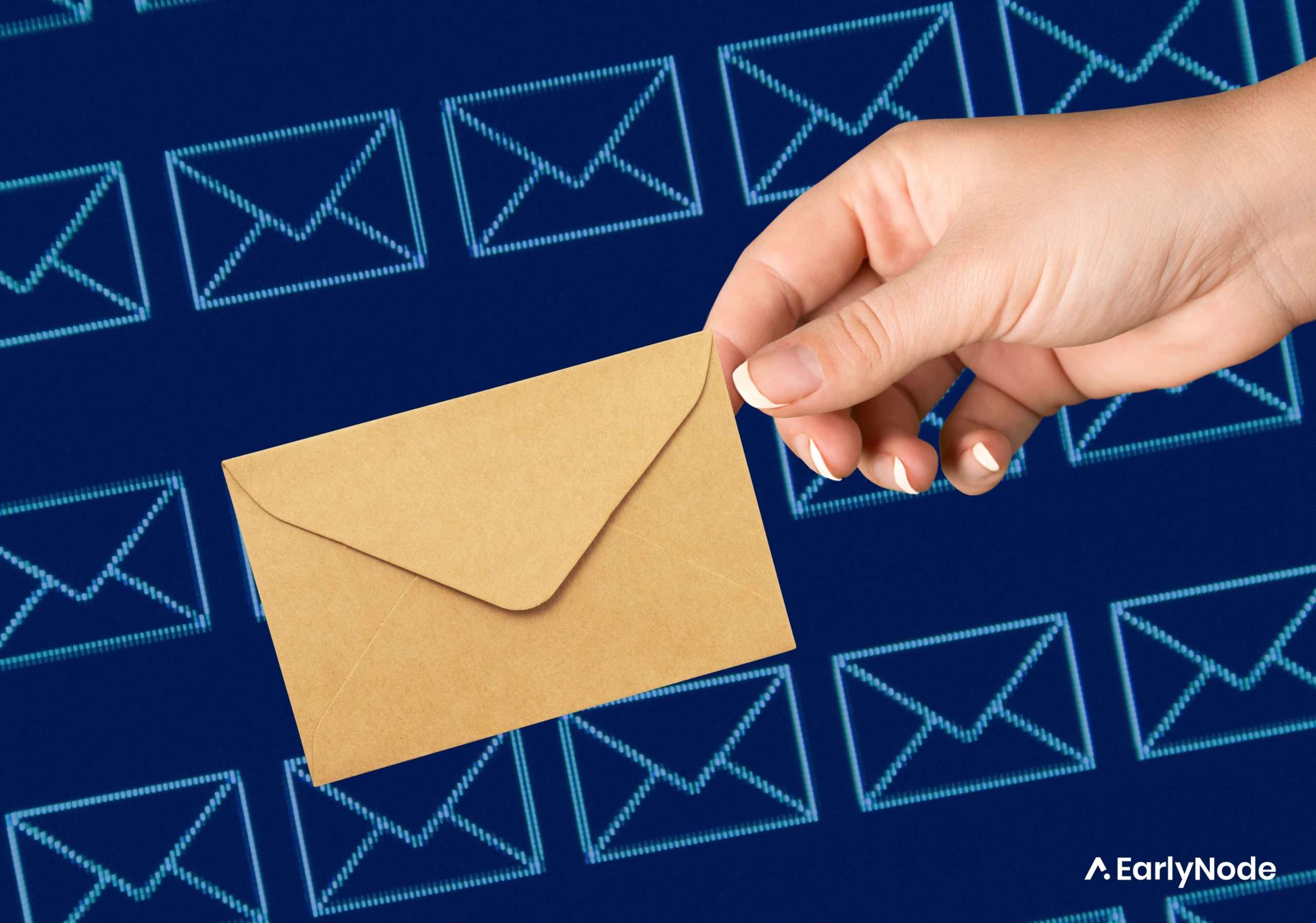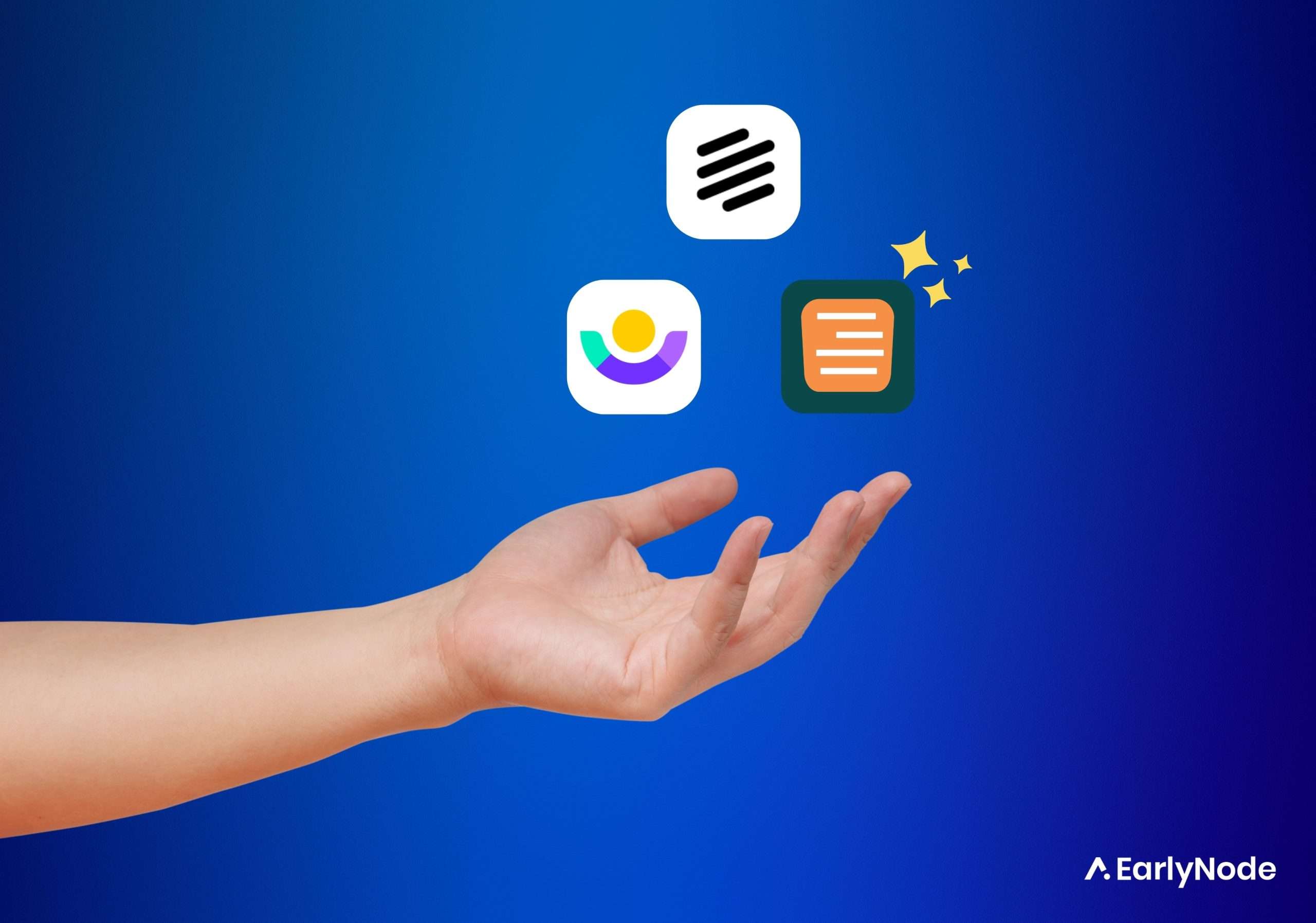How to Communicate New Features to Your SaaS Users

TL;DR
- Announcing new features helps users discover that feature. If they go on to adopt the feature, it boosts your product adoption rate.
- Feature announcements should focus on how the user benefits, rather than merely saying what the feature can do.
- Your beta testers are a source of social proof to encourage more users to try the feature.
- Analyse and document your processes and results to have a blueprint for more success in future releases.
- When choosing the announcement channels, consider those that suit the release, your target users, and your objective.
If you want to have your users adopt your B2B SaaS product and create an engaged user base, you need to know how to effectively announce new features.
But when it comes down to it, many product managers and product marketers get stuck on the same question: What’s the best way to announce new features to get the best engagement and adoption rates?
In this article, we’ll explore some of the best practices for sharing new features with your users to keep them hooked and make them loyalists.
Why announcing new features is necessary
Communicating new features, giving users early notice, and explaining what’s new isn’t just a nice-to-do. It lays the groundwork for bringing awareness to your SaaS app, improving adoption, and building trust.
Here are a few benefits of early communication about new features and product changes.
Boosts user engagement
Users will be happy with your product as long as it fulfills their jobs-to-be-done. But they might switch to a competitor if their product has more features that makes their work easier. It’s your job to give them reasons to stay and pay you every month.
You can do that by continuously making new features and updates that solve their pain points…and announcing them.
Communicating your new features also shows that your team is listening to users’ needs and actively working to make changes.
Improves feature adoption
User engagement is a superpower for a SaaS product. But you first need product adoption and activation to get to user engagement.
This can be achieved with an effective user onboarding process for your new users. But what about inactive or existing users? How do you drive product adoption with them?
Here, communicating new features can help you bring these users back and boost product usage. Include a call to action, making it easy for users to use new features immediately.
Reduces friction
We are creatures of habit. We get used to the everyday processes and dislike it when something changes.
Imagine if someone rearranged your keyboard layout every few weeks because they’ve “optimized” typing. How frustrating would that be? .
While your product changes might not be that frustrating, remember that even little changes can sometimes disrupt user workflows. And if you fail to communicate changes early on, you might face a blow in how users engage with your product.
Builds trust among users
One often overlooked advantage of sharing product updates and new features right after launch is its positive impact on building user trust in your product.
When your release notes are easily available to new users and website visitors at the beginning of their customer journey, the improvements you’ve made show that you’re actively listening to customer feedback.
This is a powerful way to build trust in your product and create loyal customers.
Maintaining a changelog increases trust and creates transparency with your users. You can use easy tools like Releaselog by EarlyNode to do it within 5 minutes.
What is a good feature announcement?
You might already know there’s no fixed way of announcing new features and communicating product updates.
It depends on the nature of the product change, the target customer base for the new feature, and more specific criteria like the announcement channel that will draw the most users’ attention.
But there are certain best practices to ensure user engagement and product adoption with successful feature announcements:
Customer-centric approach
It is best to follow a customer-centric approach in your announcement strategy whenever you want to announce a product change.
In the end, you want your customers to engage, use, and adopt new features and changes.
If your product updates are all about how your team worked hard, how this feature will change the world, and how you’re doing your users a favor, customers won’t be moved.
It’s better to frame your announcement to show how your users are going to benefit.
Easy accessibility
You may write the world’s best product updates, but if your users can’t find them, what good is that? That is why your release notes and feature announcements should be easily accessible to every user.
You can use a tool like ReleaseLog to create a changelog and publish release notes announcing new features. Anybody can then access info about any product update you’ve rolled out.
Multi-channel distribution
Along with a standalone changelog, you should consider announcing new features on other channels too.
In-app announcements, social media, and blog posts are three of the most effective ways to announce new features. These channels grab more attention and drive more user engagement and feature adoption.
Emails might not get opened much but are a good way of reaching inactive customers to try to re-engage them.
To be effective at email, send them only when it’s very necessary. Sending too many announcements in a short time might annoy your users and some might start to ignore your messages.
5 tips for presenting new product features to users
Companies typically launch new features and product updates, for two main reasons: driving adoption and promoting engagement.
When you’re announcing a new feature, it can be tempting to flood with a list of what it can do. But before you channel your inner salesman, keep in mind that users might not care about what this new feature can do. They care about what it can do for them.
Here are 5 tips to help you present your new features to your users more effectively.
1. Involve the whole team
Help your marketing team to understand the features in the development pipeline early on. This will help them craft spot-on messaging around the new features and develop relevant GTM content.
Before releasing a new feature ensure customer-facing teams are trained on the new functions and the messaging. Customer success, support, and sales teams need to be aligned on what the feature does and why it matters to users.
2. Communicate well when you launch
When you’re crafting messaging for a new product feature, always lead with value.
What user needs are you addressing? What problem are you solving? What benefit have you added to your product? What can users do now that they couldn’t before?
You should get into the specifics only after establishing the significance and purpose of the changes. This shows users that you’re working to fulfill their needs and not just to add another bullet point to the list of features.
After building their excitement ahead of launch, the next thing is to quickly get users to try out the feature when it’s released. So your initial communication should focus on making it easy to get started with the feature. Use simple step-by-step directions to guide users through the journey.
3. Use the right channels at the right time
If you have an app with many active users, in-app feature announcements are probably the most useful distribution channel for you. But not just any format will do.
You need to craft your messaging in a format that suits your audience, feature, and objectives.
For example, if you’re constantly pouring new features, it might not be a good idea to announce each of them with big intrusive in-app modals. Instead, you can go with tooltips that pop up when triggered by a certain action. Or use an in-app changelog widget that gives your users a choice to read updates whenever they want.
Similarly, for social media, decide which social media platforms (Twitter, LinkedIn, etc.) to post on and which formats to use (video, image, etc.)
Ultimately, plan your channels and formats beforehand to make feature announcements more successful.
4. Use beta users for social proof
Your new features can also enjoy social proof. That would be from their beta testers.
Beta testers are a great source of marketing collateral. They can help make your new feature announcement more exciting and compelling for your customers.
Get testimonials from your beta testers and share them along with your new feature announcements. This provides some social proof, and the good reviews could tell users about the new functionality’s impact.
5. Analyze and document each step
After announcing your new features and product changes, you can’t sit back and relax. It’s time to analyze what worked and what didn’t.
Like any growing product, you will have many new feature announcements in the future. And you don’t want to start from scratch anytime you need to communicate product updates.
It’s important to document things like the success of your announcement on different channels, customer feedback, and user engagement and adoption rates. This gives you a template for your upcoming product releases and feature announcements.
6 Ways to communicate product changes to your customers
There’s a good reason for using multiple communication channels. Not every one of your target customers uses a single communication medium. So you must use different communication modes to reach everyone in your target audience.
Take advantage of multiple channels to increase your chances of getting users’ attention on their choice of platform.
Here are a few ways to communicate product changes, especially new features, with your users:
Changelog
A standalone changelog allows you to share all the changes and updates you’ve made to your product in one easy-to-find place.
One of the best things about changelogs is that they make it easy for users to keep track of every product update. Your users can easily see what changes have been made, when they were made, and their impact on users.
Announcing new features through a changelog allows you to build trust with your users by sharing every little detail, educational resource, and upcoming changes.
You can use changelog tool like ReleaseLog to set up your own changelog in seconds.
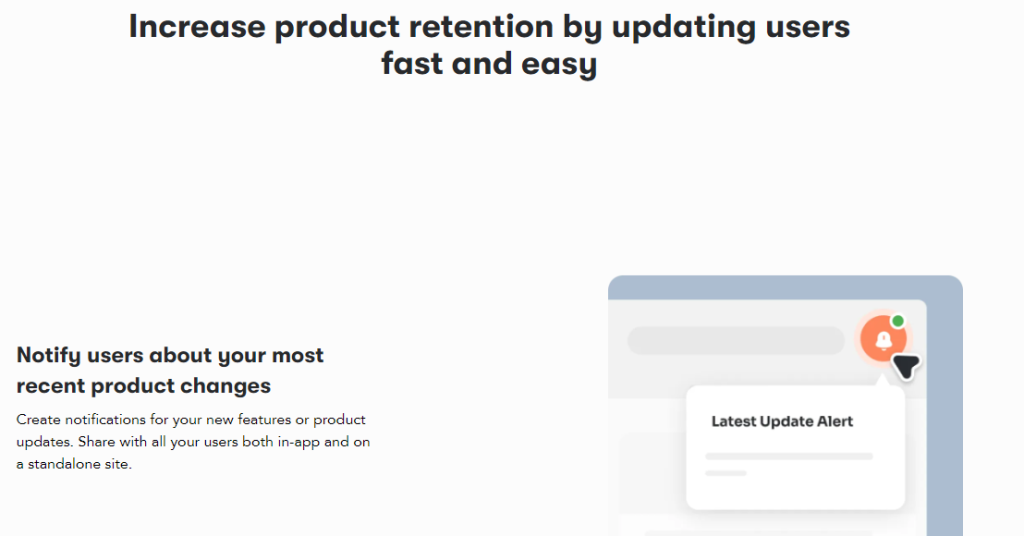
In-app messaging
Whether it’s a mobile, desktop, or web-based SaaS, there’s nothing as effective and relevant as announcing new features and asking users to try them while they’re using it.
In-app announcements also give you a lot of flexibility in terms of announcement format.
These include pop-ups, banners, slide-outs, and models. All of these can effectively communicate product changes to the users.
There’s a risk, however. Because your users are in the middle of using the product when seeing these messages, they might not want to slam on the brakes to read about a new feature. Also it could hinder their work flow and users do not appreciate that.
To ensure it doesn’t happen, ideally, place these messages at the end of workflows versus the beginning. You can also trigger tooltips about a new feature in context as users use the app.
Here’s how Amplitude does the same thing with its data table conversion feature:
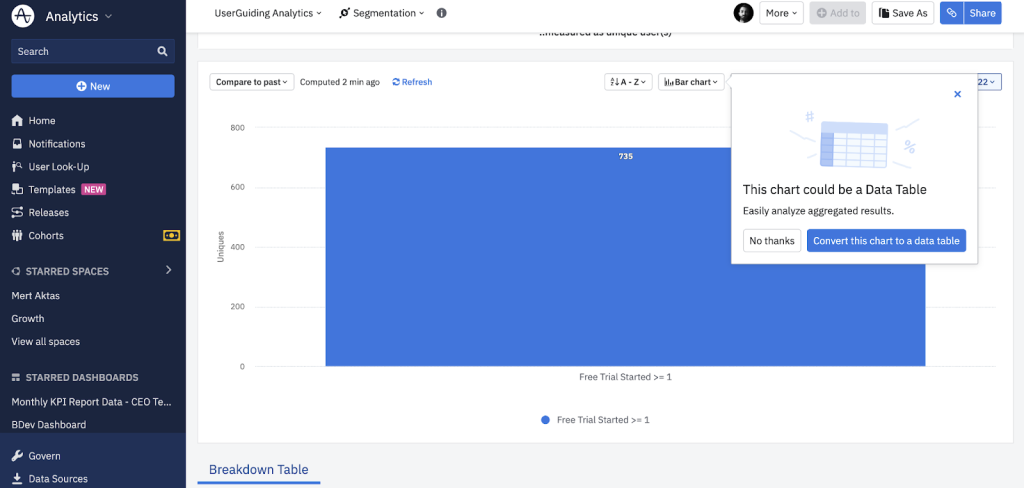
Blog posts
It’s highly likely that a lot of your readers are not yet using your product but have a keen interest. This makes your blog a useful way to spread the word about new features to current and future customers.
You can make the most out of your product blog by communicating product changes. Eg, you can write a blog post explaining why the new feature is being launched and how it works.
Explaining the feature benefits shows your customers how it will improve their experience with your product, making them more likely to try it out.
You can also provide some tips on taking advantage of what’s new and can link to other useful content related to the update, such as help articles or documentation.
Email announcement
Email is tried, tested, and effective at re-engaging with users while they’re away from your SaaS app.
You can use email to communicate in different ways. You can send an initial email blast to all your users announcing your new feature. Include a link at the end of your message prompting them to try out the feature. You can also link to detailed blog posts in the emails.
It’s always a good idea to personalize emails by using user segments, eg., based on user activity. If some of your users already use features similar to the new one, tell them how the new feature can make their work even easier.
Or if they need to upgrade in order to access the new feature, you can send an email focused on upselling.
Social media
Platforms like Twitter and LinkedIn are excellent for companies to build a loyal audience.
If your product is popular on social media, announce your product changes there as well.
Social media is a great place to build buzz around something new and exciting in the works.
Even if your SaaS app isn’t one of the giants on the internet in your industry, engaging with customers on social media is worth it.
This can also be a great chance to attract prospects, especially by sharing new use cases or benefits of the new features.
Webinars and demo videos
While some people might like to read thousands of words to understand a feature, others are more visual learners.
Use demo videos to explain how your new feature works to your users and its value proposition. You can distribute this content using in-app modals or link them in your changelog or blog posts.
Webinars are also a great tool for feature demonstrations. They offer users a unique chance to ask questions and be interactive. This can lead to better insights to make more substantial changes, advanced features, or better products.
3 great product update announcement examples
Choosing the right channel and messaging for your product updates can go a long way in making it frictionless for users to adopt features.
But it can be tricky work.
Here are 3 of those examples to draw inspiration from for your company’s next rollout.
Zendesk: Training webinars
Users love it when the executives engage and tell them about product updates. You can do this through webinars, as Zendesk does.
Zendesk holds a quarterly session called, What’s New. They reveal all the new developments and product changes in a particular quarter.
A product expert from Zendesk guides users and potential customers through the new features through live demos. They also answer questions from customers in the live session.
This clears objections in customers’ minds, making product adoption a no-brainer.
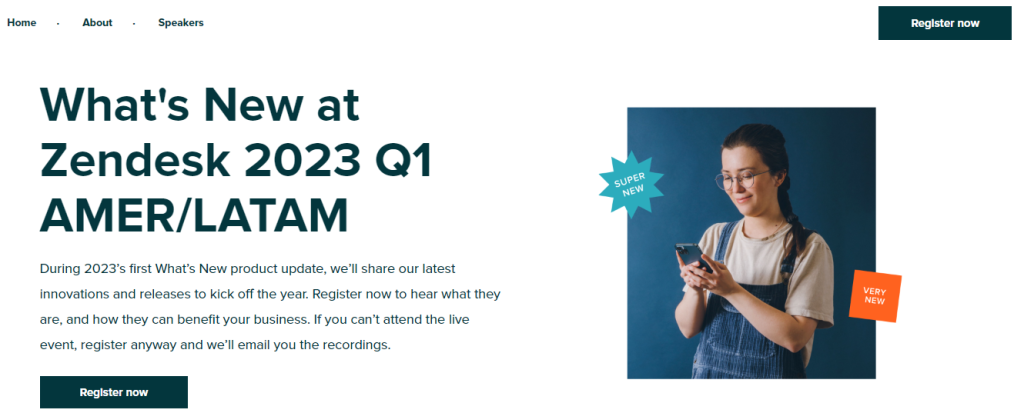
Loom: Engaging changelog
While webinars may be a great tool to engage new and paying customers, not everyone may have the time to join live. Most people will come to scan through new releases to find what they need.
This is where an easy-to-use, aesthetically pleasing, changelog can help your customers. Loom’s standalone changelog is a good example of an organized changelog..
With loads of categories and a calendar to filter out specific updates, Loom’s changelog makes it very easy for customers to find things that interest them. Loom also incorporates aesthetic visuals into its release notes to educate users.
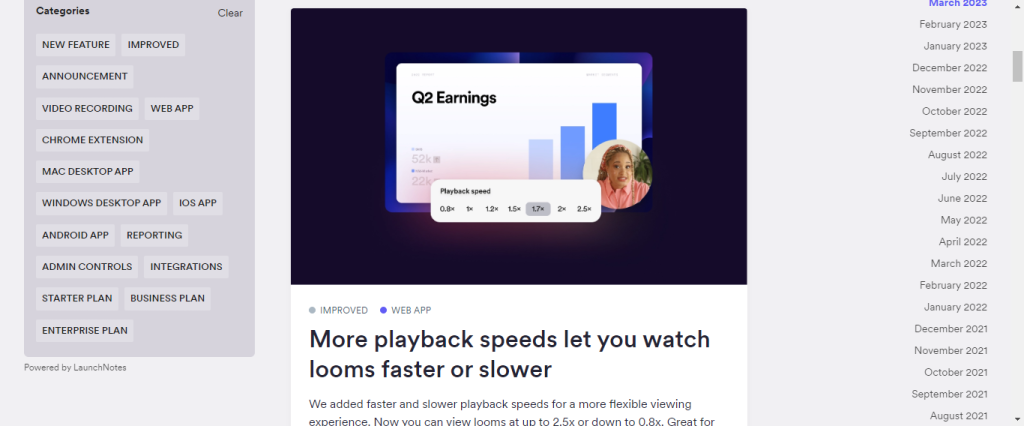
Canva & Grammarly: Email announcements
Webinars and changelogs need the user to actively engage. But when it comes to emails, all users have to do is check their inboxes.
Email is popular with SaaS companies, Canva and Grammarly included. Here are a few things we noted.
- Attention-grabbing subject lines to get the email opened.
- Eye-catching images as headers.
- Scannable copy with focus on benefit to the user.
- Clear call-to-action to drive immediate action.
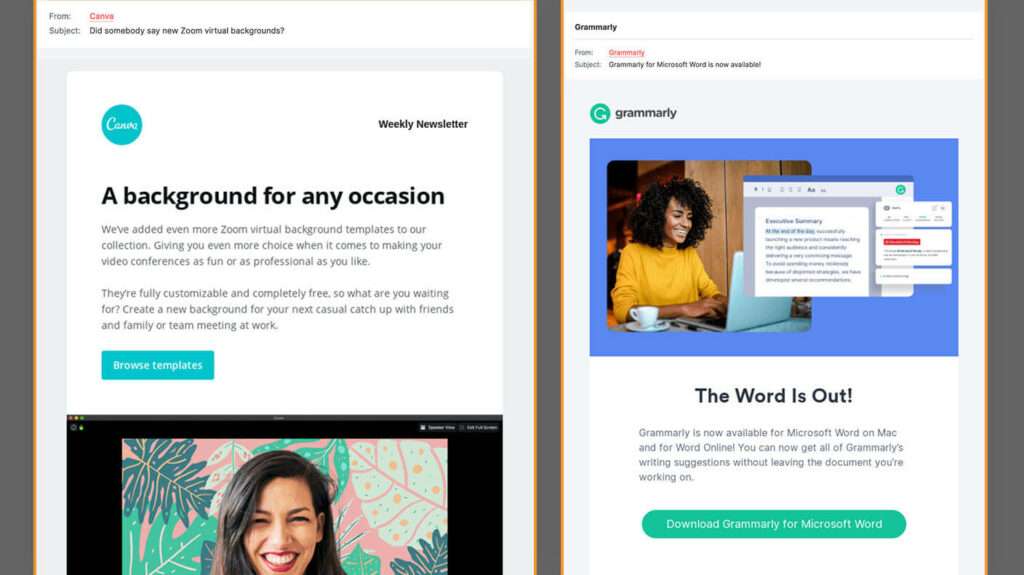
Final Thoughts
New features need the maximum attention so that they can be properly adopted. To do that you need to plan your announcement strategy – from the right channels to the content of your message.
Of course you may not get it on the first try, but experiment and test different methods to find what works for you. Once you do document your processes so that you can have even more success for future releases..
